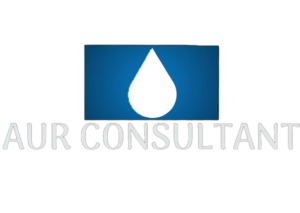
Estimated Reading Time: 6-8 minutes
Table of Contents
The job market has undergone a significant transformation in the past decade. Gone are the days when job security was the primary factor in an employee’s career decisions. While previous generations sought long-term stability, today’s workforce—dominated by Millennials and Gen Z—prioritizes career growth, personal fulfillment, and work-life balance over tenure.
Several factors are driving this shift:
Technology Advancements: Automation, artificial intelligence, and digital transformation have reshaped industries, leading to the emergence of new roles while making some obsolete.
Globalization: Companies can now hire talent from anywhere, increasing competition and diversifying the workforce.
Cultural Shifts: The younger workforce values inclusivity, collaboration, and purpose-driven work, moving away from rigid hierarchies.
Economic Uncertainty: While job security still holds some weight, employees are more willing to change jobs frequently if they feel unfulfilled or undervalued.
Companies that fail to recognize these changes and adapt to new expectations risk losing top talent to competitors who embrace workplace evolution.
The term “talent war” refers to the increasing competition among organizations to attract and retain top-tier professionals. In this highly competitive landscape, businesses face several challenges:
The rise of new technologies has created a demand for specialized skills, but the supply often falls short. Employers now invest in upskilling and reskilling programs to bridge this gap.
Companies are no longer restricted to hiring within their local regions. Remote work has opened opportunities to attract diverse talent from different parts of the world, intensifying competition among businesses.
With Millennials and Gen Z forming a significant portion of the workforce, traditional recruitment strategies no longer suffice. These generations seek employers who align with their values and offer meaningful career development opportunities.
Organizations must be agile in adapting to the evolving workforce landscape. Here’s how they can stay ahead:
Embrace Technological Innovations: From AI-powered recruitment to digital collaboration tools, technology should be leveraged to enhance productivity and employee experience.
Rethink Organizational Structures: Companies should move towards flatter hierarchies, where employees feel empowered to contribute ideas without fear of rigid authority.
Promote a Culture of Continuous Learning: Employees should have access to training programs that help them stay relevant in a rapidly changing job market.
A purpose-driven organization aligns its goals with social or environmental impact, attracting employees who seek meaningful work.
Example: Patagonia has built a strong employer brand by focusing on sustainability. Employees who care about environmental conservation are naturally drawn to the company’s mission.
Employees who feel their work contributes to a greater cause experience higher job satisfaction and engagement, leading to improved retention rates.
Workplace flexibility is now a top priority for employees, with remote and hybrid work models gaining popularity. Companies that offer flexible work arrangements benefit from:
Higher Productivity: Employees can work during their most productive hours, leading to better efficiency.
Improved Job Satisfaction: Workers appreciate the autonomy to balance personal and professional responsibilities.
Expanded Talent Pools: Companies can hire from a wider range of locations, accessing a diverse pool of skilled professionals.
Example: Tech giants like Google and Microsoft have implemented flexible work policies, allowing employees to choose between in-office, hybrid, or remote setups.
Diversity, equity, and inclusion (DEI) initiatives are more than just corporate buzzwords—they are essential components of a thriving business. An inclusive workplace leads to:
Increased Innovation: Diverse teams bring different perspectives, leading to creative problem-solving.
Higher Employee Engagement: Workers feel more valued and motivated in an inclusive environment.
Stronger Company Reputation: Businesses known for their DEI efforts attract top-tier talent and loyal customers.
Companies must actively implement DEI strategies through unbiased hiring practices, mentorship programs, and employee resource groups.
Today’s employees prioritize three main factors:
1. Personal and Professional Growth
Career stagnation is one of the biggest reasons employees leave jobs. Organizations must invest in training programs, mentorship, and internal mobility opportunities to retain talent.
Employees expect companies to support their well-being through flexible work arrangements, mental health programs, and reasonable workload expectations.
People want their work to contribute to a larger goal. Businesses that communicate their mission clearly are more likely to attract and retain employees.
To secure top talent, businesses should implement the following strategies:
Create a Positive Work Culture: Foster inclusivity, transparency, and collaboration.
Invest in Employee Development: Offer training, mentorship, and clear career paths.
Prioritize Employee Well-Being: Support mental and physical health initiatives.
Embrace Technology: Provide modern tools to enhance productivity.
Offer Competitive Compensation and Benefits: Ensure salaries, bonuses, and perks remain attractive.
Recognize and Reward Contributions: Implement recognition programs to boost morale.
Leadership plays a crucial role in employee retention. Today’s workforce values leaders who:
Communicate Openly: Transparency builds trust.
Lead with Empathy: Employees appreciate managers who understand their challenges.
Encourage Collaboration: A team-oriented approach fosters a sense of belonging.
Provide Growth Opportunities: Employees stay longer when they see a clear career path.
Organizations should prioritize leadership training to develop managers who can effectively engage and inspire their teams
The modern workforce is driven by growth, purpose, flexibility, and inclusivity. Companies that embrace these values will not only attract top talent but also retain and nurture a loyal, high-performing workforce.
Winning the talent war is about more than just hiring the right people—it’s about creating an environment where employees feel valued, inspired, and empowered. By adapting to these shifts, businesses can position themselves as leaders in the evolving job market, ensuring long-term success in an increasingly competitive landscape.

Your honest partner in the search of the best